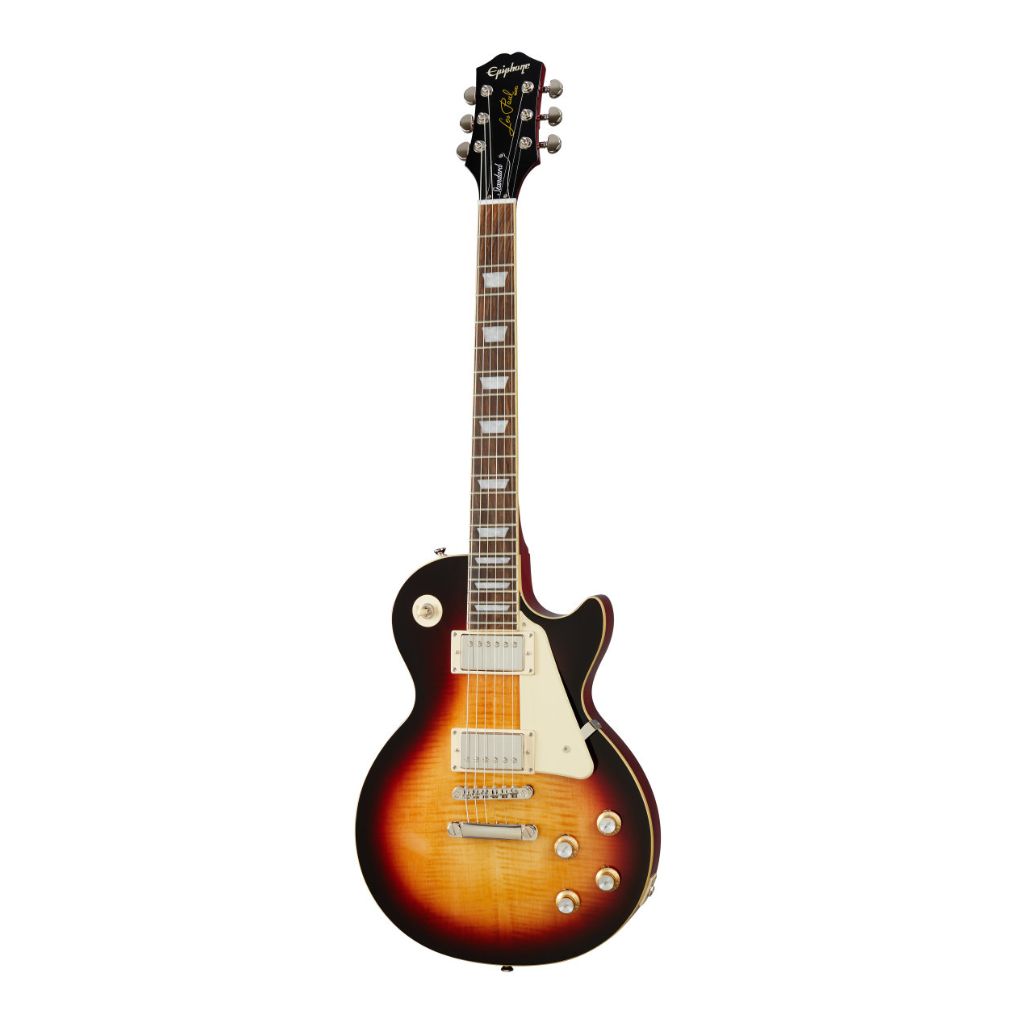A Brief History of Epiphone Guitars
Epiphone celebrates its 150th anniversary this year, but there’s much more to this iconic brand than making cheap versions of Gibsons.

Noel Gallagher playing an Epiphone Sheraton Union Jack guitar onstage in 1996. Image: Patrick Ford/Redferns via Getty Images
While the modern understanding of Epiphone is that of a cheaper branded instrument made overseas under the Gibson banner, Epiphone has quite a history prior to the acquisition by Gibson in 1957. This year, Epiphone celebrates its 150th anniversary and to help them celebrate, we’re going to explore the intriguing history of the Epiphone brand, particularly the years leading up to the Gibson takeover.
- READ MORE: A Brief History of Schector Guitars
The genesis of the company that would become known as Epiphone starts back in 1873, in the Ottoman Empire, where Greek founder Anastasios Stathopoulos made a living as a lumber merchant who also built and repaired fiddles and lutes using the finest lumber.
Eventually he gained a reputation for his builds and opened his own factory building ouds and laoutos – instruments somewhat popular in that era. Stathopoulos moved to the United States in 1903 and continued to make his original instruments, adding mandolins to the lineup in 1909 under his first and only US patent. He set up a factory in Queens, New York and continued to build high quality instruments. Anastasios passed away in 1915, and his son, Epaminondas (nicknamed “Epi”), took over.
Epi worked at the factory and gained full control of the company upon his mother’s passing in 1923. At that time, he began making the most popular instrument in America after the end of World War One – banjos, officially renaming the company, the Epiphone Banjo Company in 1928.
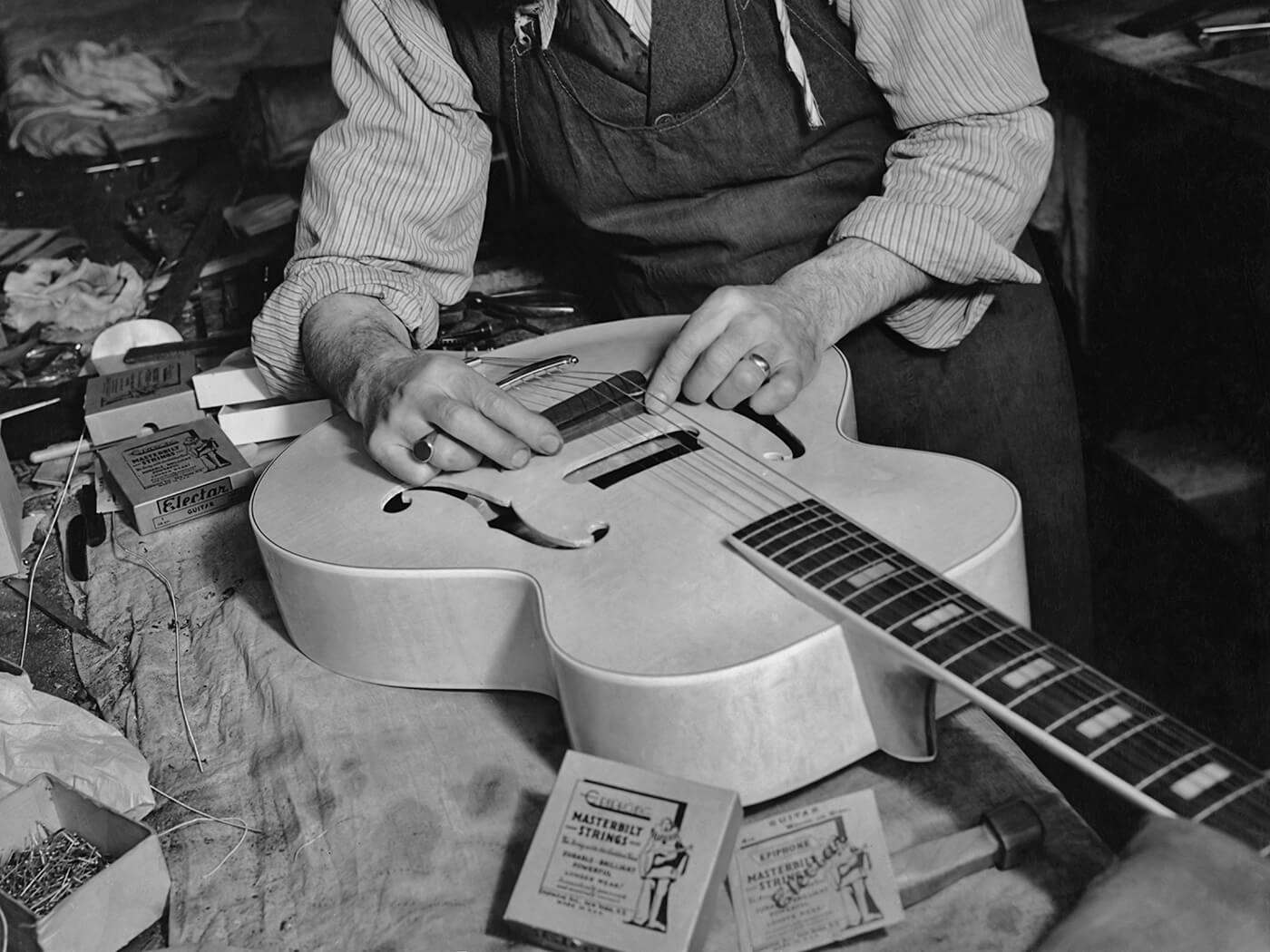
In that same year, Epi started making flattop and archtop acoustic guitars as well. In 1931, the company introduced a carved top acoustic similar to Gibson’s L-5 – Gibson being Epiphone’s main competitor. The two companies continued to one-up each other throughout the 1930s.
Back in those days, Epiphone actually had a marketing edge on Gibson. The company’s shop was located in New York and took full advantage of the celebrities of the era frequenting the store – it became somewhat of a local hangout for big city musicians like Al Caiola, Harry Volpe, and Les Paul, who would sometimes jam on Saturday afternoons as people listened from the sidewalk.
Epiphone continued to innovate and stay current with musical trends. When Rickenbacker came out with the first electric pickups in the early 30s, Epiphone responded with an electric steel guitar of its own in 1935, with the Electar line, which featured unique design specs such as individually adjustable pole pieces on their pickups.
That same year, the company worked with another Hawaiian Steel Guitars company to design the first Epiphone-branded amplifiers. Gibson released their first electric guitar, the ES-150 in 1936. In 1939, Gibson and Epiphone both introduced similar ‘pitch-changing’ Hawaiian guitar designs, a precursor to the pedal steel.
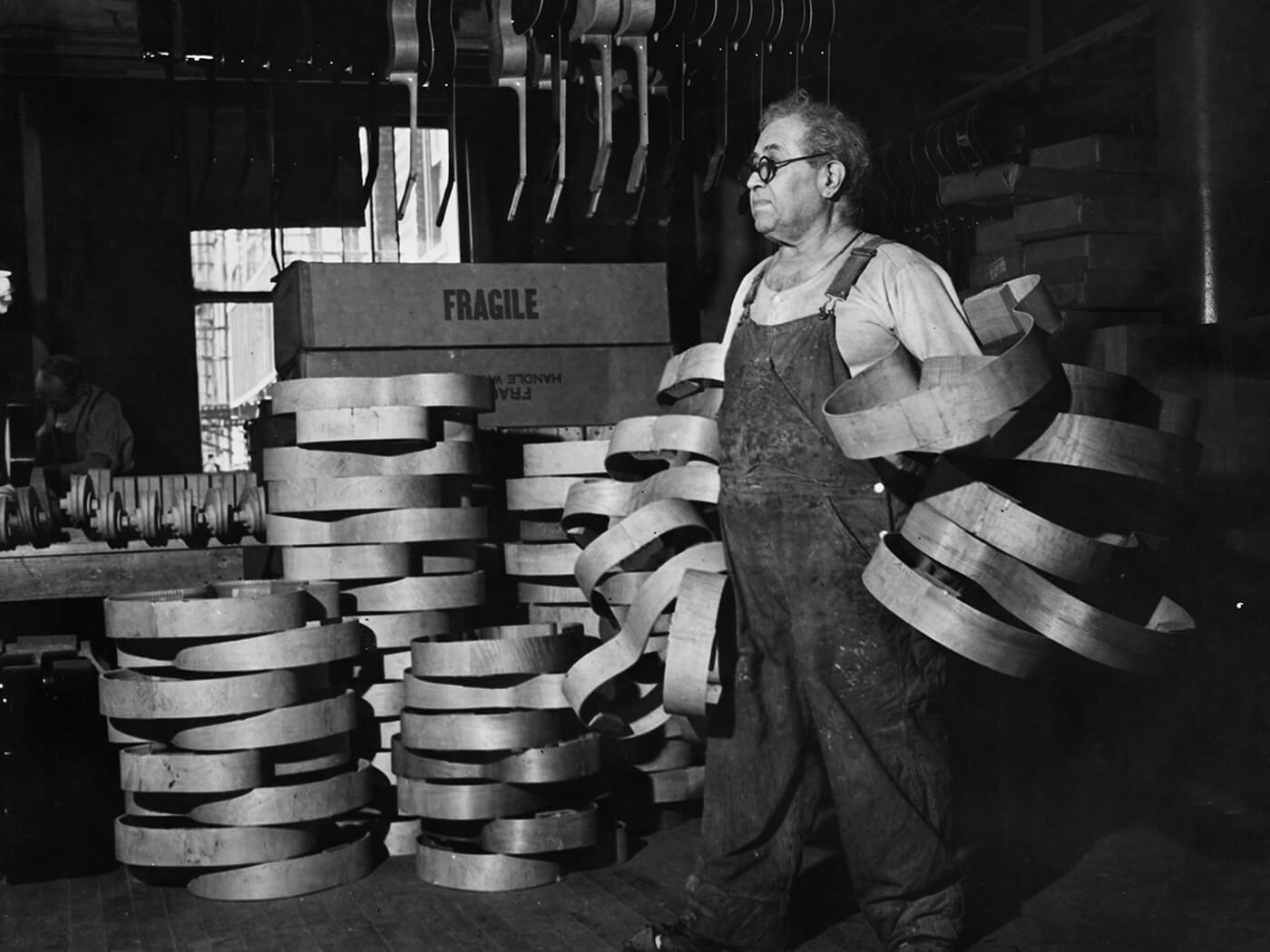
Also in 1939, Les Paul spent some nights at the Epiphone factory putting together an instrument he built himself – this was the legendary “Log” that Paul used to sell his idea for a solidbody electric to Gibson. It was actually an Epiphone archtop body that had been cut in half and a block of solid wood was placed into the centre with the bridge, pickups and electronics attached to it. The neck was from a Gibson. This hybrid of solid and hollowbody guitars would serve as a massive step in the evolution of electric guitars from hollowbody instruments to solidbody. “The Log” is enshrined at the Country Music Hall of Fame in Nashville today.
Epiphone’s future was looking promising, but unfortunately, America’s entry into World War II would bring hardship to many instrument builders who would dedicate sections of their factories and supplies to the war effort, not to mention the depleted labour force, as many young men went off to fight in the war.
Furthermore, by the end of the war in 1945, Epi had died of leukemia and control over the company was given to his younger brothers, Orphie and Frixo. One has to wonder if Epi had still been alive, if Les Paul would have signed on with them instead of Gibson, but we’ll never know.
In the early 50s, Les Paul became a household name with a television show, a radio program, and chart-topping hits, all played with his name-brand Gibson Les Paul. Les had been perfecting his solid body guitar design in the Epiphone factory, but when Fender came out with the first solidbody design, that would come to be known as the Telecaster, Gibson President Ted McCarty wisely made Les Paul Gibson’s first solid body electric guitar endorser.

Meanwhile, at Epiphone, the brothers moved the factory from New York to Philadelphia in 1953, allegedly to avoid a union clash, but many of the company’s craftsmen refused to leave New York, and as a result, quality suffered.
By the mid 1950s, Epiphone was struggling to stay afloat, and in 1957 the company was acquired by Gibson. The entire Epiphone company, including the remaining inventory of the Philadelphia factory, was sold to Gibson for a mere $20,000 [$215,624.73 in today’s money].
McCarty’s original plan for Epiphone was to use it as a banner for their bass lineup but he changed his mind. Instead, he moved production of Epiphones to their Kalamazoo factory and offered Epiphones to dealers who wanted to sell Gibson instruments but hadn’t proven they could be profitable.
Back in the days of brick-and-mortar stores, being an authorised Gibson dealer was a big deal, but you had to be able to move their product. So they distributed Epiphone branded instruments through dealers who were new to their dealership network. This began the modern inclination of Epiphones being ‘lesser-than’ or ‘cheaper-than’ Gibson.
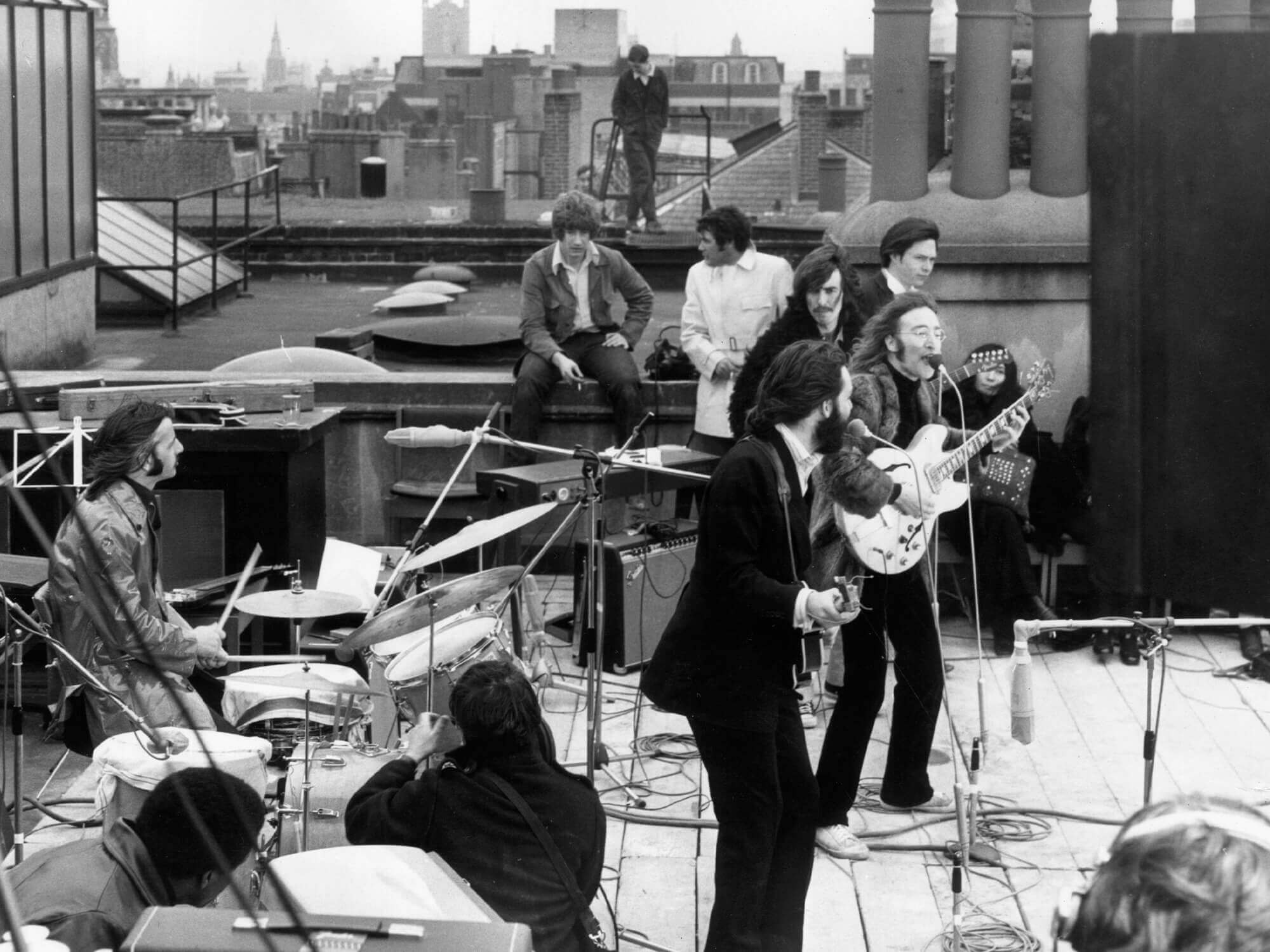
The 60s and 70s saw a mild revival for the Epiphone name when the brands guitars were used and endorsed by the likes of the Beatles – notably the Casino and Texan – and Roy Orbison.
It caused a boom in demand for these instruments, particularly the Casino – a guitar John Lennon clearly loved a great deal, as he used it in various forms throughout the band and beyond. Lennon’s stripped natural Casino was the guitar played on the band’s legendary final rooftop gig as seen in Peter Jackson’s Get Back series, and he continued to use it until his death.
But the interest in Epiphone wouldn’t last, and before long the influx of similarly affordable instruments from Asia in the 1970s would cause real problems. As a result, in 1983 Epiphone relocated to Korea as part of the changes made to the brand during the Norlin Era. Norlin partnered with the Samick Company to begin producing affordable Epiphone-branded Gibson models that could compete with these import guitars.
That would become the focus of Epiphone for most of the following decades – making Gibson-looking instruments under the Epiphone brand but with the ‘wrong’ headstock.
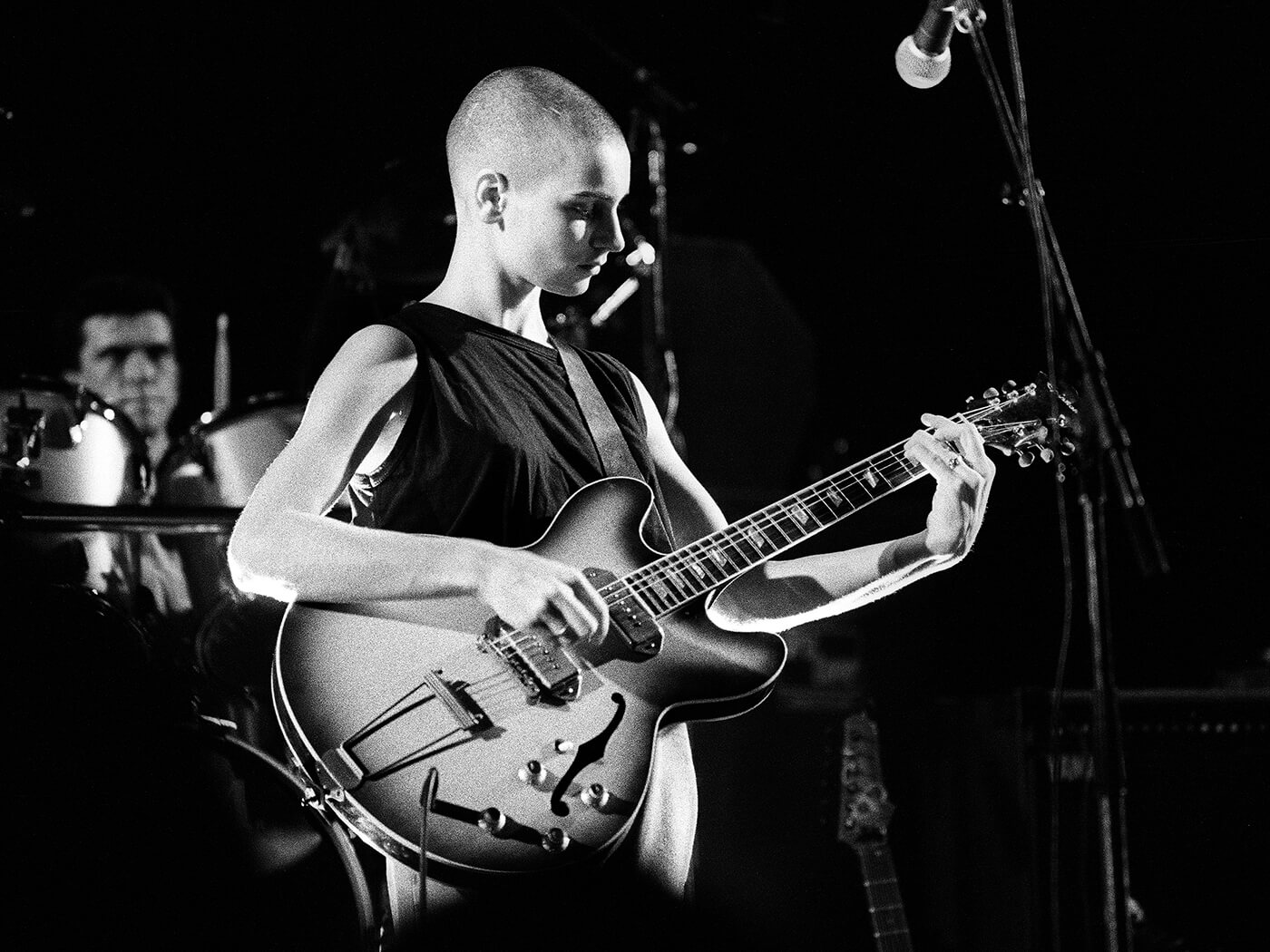
It’s these authorised copies that still drive most of Epiphone’s sales to this day, but there have been some recent revivals – in 2021 a USA Casino was produced in small numbers by Gibson in the Nashville factory, and a USA Texan followed in 2022 made in Bozeman.
At the more affordable end, Noel Gallagher’s signature Riviera has sold like hot cakes thanks to the Oasis man’s endorsement, while the 150th anniversary of the brand has given Gibson a chance to remind the world of Epiphone’s unique additions to the guitar world – including the Crestwood, Sheraton and Wilshire.
Epiphone might be known as Gibson’s budget brand, but there’s a lot more to this historic company than copies.

